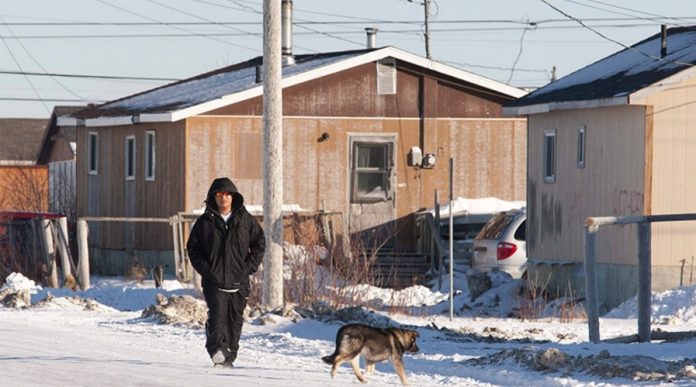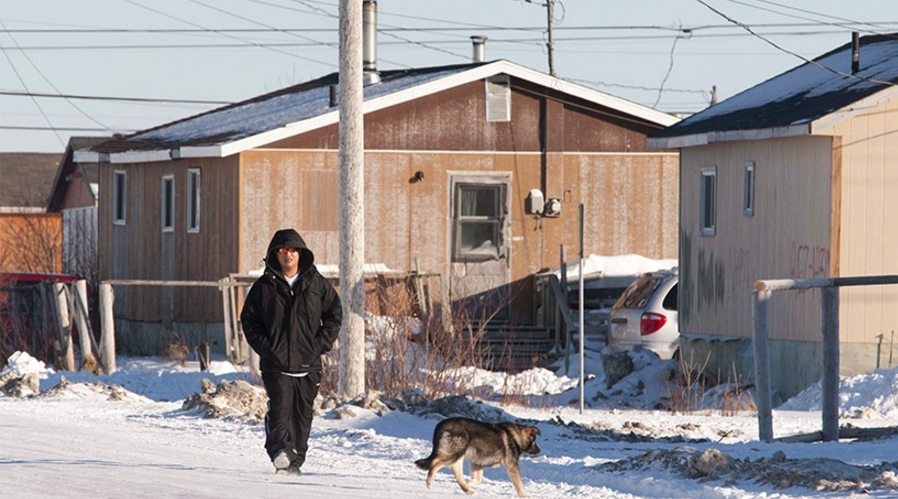
There’s a crisis gripping a small indigenous community in Northern Ontario: The Attawapiskat First Nation, home to fewer than 2,000 people, is struggling with a suicide epidemic.
In October, a 13-year-old girl committed suicide in Attawapiskat; since then, according to the Canadian Press, there have been 100 more attempted suicides – including 28 in March.
On Saturday night alone, officials said, 11 people attempted to take their own lives in Attawapiskat, prompting the chief and council to declare a state of emergency.
“I’m asking friends, government, that we need help in our community,” Attawapiskat First Nation Chief Bruce Shisheesh said, according to CBC. “I have relatives that have attempted to take their own lives . . . cousins, friends.”
There have been more suicide attempts since the chief and the council declared a state of emergency Saturday.
A scheduled Monday night forum for young people and mental-health workers was canceled when multiple people – including one as young as 7 – were taken to the hospital after apparently planning a group suicide, relief nurse Crystal Culp told CBC, adding that some of the youth “had already initiated steps to self-harm.”
Anna Betty Achneepineskum of Nishnawbe Aski Nation told the Ottawa Citizen that police detained 13 youths after learning of a suicide pact and had them placed under watch at the local hospital.
“It is very tense,” she told the newspaper.
The youth, according to the CBC, spoke with mental health counselors “about their feelings of despair” and said bullying and “a lack of things to do” were among the factors that made them suicidal.
“It hasn’t been easy to be strong,” Shisheesh, the Attawapiskat First Nation chief, said in an interview with CBC. “It hasn’t been easy to stay positive because I keep thinking about our young people. And as a chief and as leaders here in our community, we don’t want to lose any youth.”
On Twitter, Shisheesh noted “the disturbing number of suicide attempts” and added: “Pray for Attawapiskat.”
Suicide has plagued Canada’s indigenous communities for decades. The leading cause of death among indigenous youth and adults younger than 45 is suicide and self-inflicted injuries, according to Health Canada.
Indigenous youths face a number of suicide risk factors, as outlined by Canada’s Aboriginal Youth Suicide Prevention Strategy. They include poverty, unemployment, substance addiction, abuse, and a family or community history of suicide. Aboriginal youths also face violence and conflict with the law. For centuries, many of Canada’s native peoples were removed and placed into residential schools, where they were forced to learn English and drop native practices and languages. Researchers have cited this inter-generational trauma, passed down over centuries, as another suicide risk factor.
“We talk about things like historical trauma as if it’s events that have happened in the past,” researcher Gerald McKinley told the Canadian Medical Association Journal. “But the number of suicide completions [is] increasing steadily, decade over decade over decade. What’s happening [now] is new communities are joining in.”
People younger than 26 were involved in nearly half of the suicides committed by Aboriginal people in Ontario between 1991 and 2013, according to a study by McKinley, a postdoctoral fellow at Toronto’s Centre for Addiction and Mental Health.
Small, remote communities such as Attawapiskat have long-standing issues that affect the mental health of their residents, Ontario Aboriginal Affairs Minister David Zimmer told the Canadian Press.
“They are very, very remote, they’re small, there’s no economy, there is a sense – especially among the younger people – of despair, a lack of opportunity and it leads to depression and anxiety and these sorts of things,” Zimmer said.
Last month, Pimicikamak Cree Nation in Manitoba also declared a state of emergency over attempted youth suicides, according to Assembly of First Nations National Chief Perry Bellegarde.
“The situation facing the people of Attawapiskat is a national tragedy that demands immediate action,” Bellegarde said in a statement Monday – one day after Prime Minister Justin Trudeau expressed concern about the suicide epidemic. He tweeted, “The news from Attawapiskat is heartbreaking. We’ll continue to work to improve living conditions for all Indigenous peoples.”
Tuesday, Canada’s House of Commons held an emergency debate about the Attawapiskat suicide crisis.
Additional resources have come to the community following the state-of-emergency declaration. The country’s health ministry dispatched 18 health workers, mental-health counselors and police to Attawapiskat, CBC reported.


